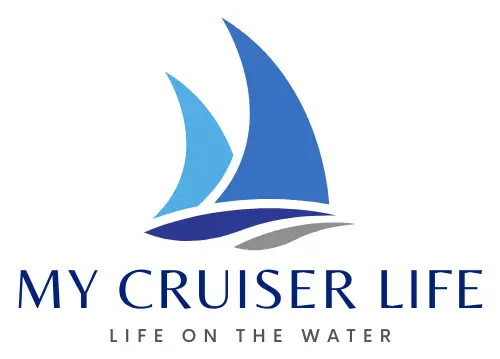Trading your landlocked life for endless horizons sounds like paradise – until you discover that standard boat insurance won’t cover your floating home. Most boaters face a rude awakening when their existing policy excludes liveaboard scenarios, leaving them financially exposed to theft, damage, and liability claims. Securing proper liveaboard boat insurance becomes even more complex when anchored in unfamiliar waters, dealing with residency requirements and coverage gaps that traditional policies don’t address. Discover insider strategies for obtaining adequate coverage, comparing costs, and avoiding costly mistakes that could sink your maritime dreams before they begin.

Table of Contents
- What Is Liveaboard Boat Insurance?
- Who Needs It?
- Types of Coverage Included
- Cost of Liveaboard Insurance
- Top Insurance Providers
- How to Choose the Right Policy
- Common Exclusions and Mistakes
- Anchored in Protection
- FAQs
What Is Liveaboard Boat Insurance?
Liveaboard boat insurance requires more than a standard yacht policy, providing personal liability coverage while you are out navigating or on land. It’s essentially a hybrid between marine insurance and homeowner’s coverage, designed specifically for folks who’ve chosen water over land as their primary address.
The fundamental distinction from regular marine insurance comes down to usage classification and liability exposure. Standard boat insurance operates under the assumption that your vessel is primarily recreational, stored safely when not in use, and operated by someone who has a traditional land-based residence. Liveaboard coverage acknowledges that your boat is your primary dwelling, which changes everything about how risk is calculated.
Most importantly, liveaboard policies typically include what’s called “HO-3 coverages” – that’s insurance speak for the same types of protections you’d get with homeowner’s insurance. This includes personal property coverage, additional living expenses if your boat becomes uninhabitable, and expanded liability protection that covers activities both on and off your vessel.
Who Needs It?
The liveaboard insurance market is experiencing significant growth, with the global market valued at approximately USD 1.2 billion in 2023 and projected to reach around USD 2.4 billion by 2032. This expansion reflects the growing number of people choosing the maritime lifestyle.
You’ll need liveaboard insurance if your boat serves as your primary residence, whether you’re a cruising sailor exploring different anchorages, a marina-based resident who’s traded rent for slip fees, or a remote worker who’s discovered that Wi-Fi and water views make the perfect office combo. Retirees make up a significant portion of the liveaboard community, having discovered that boats can stretch retirement dollars while providing adventure and flexibility.
Maritime professionals like yacht delivery captains, marine surveyors, and charter boat operators often choose liveaboard lifestyles, too. The key determining factor isn’t your profession – it’s whether losing your boat would mean losing your home. If the answer is yes, standard recreational coverage won’t adequately protect you.
Related: 9 Best Liveaboard Catamaran: Sail Away and Explore the World in Style!
Types of Coverage Included
Hull and Structural Protection
Hull insurance covers physical damage to your boat’s structure from collisions, storms, fire, or vandalism. This protection is fundamental since your vessel serves as both transportation and residence, making structural integrity critical for your safety and security.
Personal Property Coverage
Personal property coverage protects everything you own aboard the vessel – from your laptop and camera gear to your clothing and cooking equipment. Since liveaboards carry significantly more possessions than typical recreational boaters, this coverage becomes essential for protecting your entire household’s worth of belongings.
Comprehensive Liability Protection
Liability coverage extends beyond typical marine scenarios. While standard boat insurance covers you for on-water incidents, liveaboard policies recognize that your boat is also your residence, so they include liability protection for situations that might arise from having guests aboard or accidents that occur in your floating home.
Medical Payments and Health Coverage
Medical payments coverage handles injuries to you and your passengers, which becomes more critical when you’re living aboard since you’re exposed to marine environments daily. This coverage addresses the unique health risks associated with full-time marine living.
Emergency Services and Alternative Accommodation
Emergency assistance and towing coverage take on added importance for liveaboards since your boat isn’t just recreational equipment – it’s your home. Some policies include coverage for alternative accommodation if your boat becomes uninhabitable due to a covered loss, ensuring you have somewhere to stay while repairs are made.
Cost of Liveaboard Insurance
Liveaboard sailboat insurance typically costs between $200 and $500 per year, though this can vary significantly based on your boat’s value, location, and coverage needs. The general rule of thumb for marine insurance is approximately 1.5% of the boat’s total value annually.
Several factors influence your premium costs. Your boat’s age, value, and condition play major roles – newer, more expensive vessels cost more to insure. Your location matters tremendously; boats in hurricane-prone areas like Florida face higher premiums than those in calmer regions like the Pacific Northwest.
Your experience level and boating record also impact costs. Insurance companies typically offer discounts for completion of boater safety courses, clean driving records, and years of incident-free boating. Interestingly, some insurers view liveaboards more favorably than weekend warriors, reasoning that someone living aboard their boat is likely to maintain it better and notice problems earlier.
Deductible amounts significantly affect premiums – choosing a higher deductible can substantially lower your annual costs. However, remember that as a liveaboard, you might face claims more frequently due to increased exposure, so balance potential savings against your ability to cover out-of-pocket expenses.
Top Insurance Providers
Several companies specialize in liveaboard coverage, each with different strengths and approaches. BoatUS, in partnership with GEICO Marine, offers comprehensive liveaboard policies with excellent customer service and competitive pricing. They’re particularly strong for sailors and provide good coverage for personal property and liability.
Progressive Marine has expanded their liveaboard offerings significantly and often provides competitive rates, especially for newer vessels. They’re known for quick claims processing and have a solid network of approved repair facilities.
Marine Underwriters Agency specializes in liveaboard coverage and understands the unique needs of the community. They’re often willing to work with older vessels or unusual situations that larger companies might decline. Marine Underwriters tries to make getting liveaboard boat insurance easy, and they’re particularly experienced with full-time cruisers.
Chubb offers high-end coverage for luxury vessels and provides excellent worldwide coverage for liveaboards who cruise internationally. Their policies often include valuable services like worldwide claims support and concierge services.
How to Choose the Right Policy
Selecting the right liveaboard policy requires careful consideration of your specific lifestyle and needs. Start by honestly assessing your navigational limits – will you stay in protected waters, coastal cruise, or venture offshore? Your answer directly impacts coverage requirements and costs.
Pay close attention to personal property limits and coverage. Standard marine policies might only cover $5,000-$10,000 in personal effects, but liveaboards typically need $25,000-$50,000 or more to adequately protect their belongings. Consider whether you need replacement cost or actual cash value coverage for your personal property.
Examine liability limits carefully. Many marinas require $1 million in liability coverage, but if you frequently have guests aboard or travel to different jurisdictions, higher limits might be wise. Some policies automatically include higher liability limits for liveaboard situations.
Emergency towing and assistance coverage becomes crucial when your boat is your home. Look for policies that include unlimited towing or at least substantial coverage amounts. Consider whether you need coverage for alternate accommodation if your boat becomes uninhabitable.
Related: 7 Best Liveaboard Boats Under 40 Feet
Common Exclusions and Mistakes
- Failing to disclose liveaboard status – the biggest mistake liveaboards make is not being honest with their insurance company about their living situation. Using standard recreational coverage while living aboard can void your policy entirely, leaving you completely unprotected when you need coverage most.
- Misrepresenting usage patterns – insurance is a contract requiring complete honesty, and lying about how you use your boat isn’t just unethical, it’s financially dangerous. Always be upfront about your liveaboard intentions from the start.
- Ignoring hurricane season restrictions, many policies exclude coverage during certain weather events or require specific protective measures when storms threaten. Some policies suspend coverage entirely during hurricane season in high-risk areas.
- Overlooking geographic limitations – navigation limits represent a common pitfall where policies restrict coverage to specific areas or require notification for extended cruises. Violating these limits can void coverage just when you need it most.
- Neglecting wear and tear exclusions – since you’re using your boat more intensively than recreational users, normal maintenance becomes critical. Insurance covers sudden and accidental damage, not problems caused by deferred maintenance or normal wear.
- Underestimating survey requirements – age and survey requirements often surprise liveaboard newcomers. Many companies require current surveys for boats over a certain age, and finding surveyors willing to survey liveaboard vessels can be challenging in some areas.
Anchored in Protection
Living aboard a boat offers unparalleled freedom and adventure, but protecting this unique lifestyle demands specialized insurance coverage. The growing liveaboard community faces distinct risks that standard policies don’t address. Don’t let insurance complexities sink your floating home dreams. Partner with experienced marine agents who understand liveaboard realities, maintain complete honesty about your usage patterns, and invest in comprehensive coverage protecting both vessel and lifestyle. Proper insurance delivers peace of mind, letting you focus on what truly matters – embracing the extraordinary life afloat.
FAQs
What does marine insurance not cover?
Marine insurance typically excludes wear and tear, gradual deterioration, mechanical breakdowns, and routine maintenance issues. Most policies won’t cover damage from freezing, electrolysis, or osmosis. Racing activities, commercial use beyond policy limits, and intentional damage are also excluded. Many standard policies don’t cover personal belongings, fishing equipment, or electronics unless specifically added. Always review your policy’s exclusions section carefully.
Who has the cheapest boat insurance?
Boat insurance costs vary significantly based on vessel type, location, and coverage needs. Progressive, GEICO, and State Farm often offer competitive rates for recreational boaters. However, “cheapest” doesn’t always mean best value. Specialty marine insurers like BoatUS or Markel may cost more but provide superior coverage and claims handling. Compare quotes from multiple insurers, considering coverage limits and deductibles, not just premium costs.
